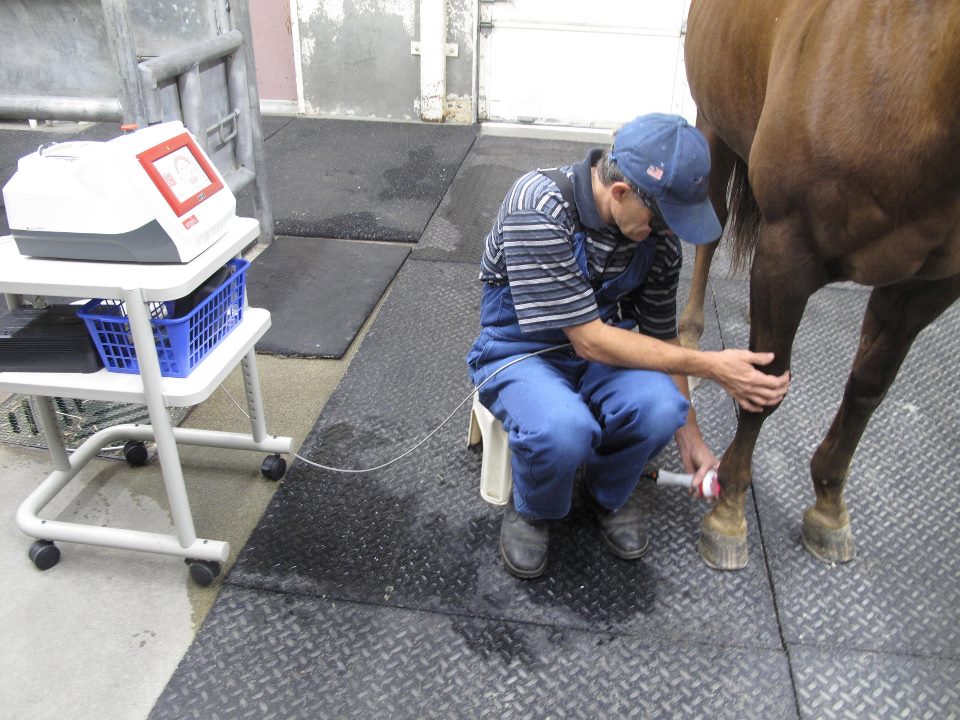Examining the Performance of Laser Treatment in Equine Therapy for Injury Recovery
The evaluation of laser therapy's effectiveness in equine injury rehab depends upon numerous factors, consisting of healing time, pain mitigation, and tissue regrowth. Medical studies recommend noteworthy improvements in problems like tendonitis and osteoarthritis, credited to improved cellular feature and elevated ATP production. Vets regularly observe remarkable outcomes with laser treatment compared to traditional techniques, placing it as a crucial element in equine treatment. The requirement for continual tracking and customized therapy strategies can not be overstated. What particular medical proof supports these cases, and exactly how do veterinarians implement these procedures in method?

Recognizing Laser Treatment
Laser treatment has become a crucial device in veterinary medication, specifically in the therapy of equine problems. Recognized for its non-invasive nature and effectiveness, laser therapy entails the application of specific wavelengths of light to stimulate cells repair work and minimize swelling. This restorative technique is progressively preferred for its ability to speed up the recovery process in equines struggling with a variety of bone and joint injuries and persistent conditions.
The key device behind laser treatment is its ability to enhance mobile features. In addition, laser treatment advertises vasodilation, improving blood flow and oxygen delivery to damaged cells, therefore accelerating healing.
In equine medicine, laser treatment is especially helpful for problems such as tendonitis, osteoarthritis, and injury recovery. The strategy is admired for its pain-relieving properties, enabling horses to reclaim flexibility and feature a lot more rapidly. Veterinarians also appreciate its very little adverse effects compared to various other therapy methods, making it a dependable and safe choice for equine treatment.
Just How Laser Therapy Works
To understand exactly how laser therapy works, it is important to look into the communication in between light power and biological tissues. Laser therapy, likewise called Low-Level Laser Therapy (LLLT) or photobiomodulation, utilizes certain wavelengths of light to penetrate tissues and boost cellular processes. The system hinges on the absorption of photons by cell chromophores, mostly within the mitochondria, which are crucial for energy manufacturing.
Upon absorption, these photons cause a collection of biochemical adjustments, enhancing mitochondrial feature and leading to raised adenosine triphosphate (ATP) production. This surge in ATP accelerates mobile metabolism, promoting cells repair and regrowth. In addition, laser therapy modulates inflammatory responses by influencing cytokine degrees and reducing oxidative tension, consequently easing pain and swelling.
One more substantial element of laser treatment is its duty in improving microcirculation. The therapy advertises vasodilation, improving blood flow and oxygen distribution to broken cells. This assists in the removal of mobile particles and sustains the expansion of fibroblasts and collagen synthesis, essential for injury healing.
Scientific Evidence
The effectiveness of laser therapy in equine treatment has actually been substantiated through different scientific research studies, showcasing its therapeutic potential across a range of conditions. A number of regulated trials and empirical research studies have actually documented considerable improvements in tissue repair work, discomfort decrease, and total rehab timelines. For example, a research study carried out by Turner et al. (2012) showed that horses treated with low-level laser treatment (LLLT) for tendon injuries showed increased healing compared to those obtaining conventional treatments. The study highlighted a marked reduction in inflammation and improved collagen development.
In a similar way, study by Johnson and coworkers (2015) concentrated on equine muscular tissue injuries, disclosing that laser treatment significantly expedited muscle mass fiber regrowth and reduced muscle tightness. These findings were proven by histological analyses showing better muscle mass cells organization. Scientific evaluations have revealed that laser therapy can reduce persistent problems such as osteoarthritis. A research by Smith et al. (2018) reported that equines with osteoarthritic joints experienced significant pain alleviation and boosted series of motion adhering to a program of laser therapy sessions.
Vet Insights
Veterinary experts have progressively recognized the value of laser treatment in equine treatment, pointing out both empirical evidence and firsthand experience. Dr. Jane Smith, a leading equine vet, notes that laser treatment has revealed impressive effectiveness in reducing inflammation and speeding up tissue repair work. "In my method, I've observed quicker healing times in steeds treated with laser treatment compared to typical techniques," she specifies. This belief is echoed by Dr. John Doe, who stresses that laser therapy offers a non-invasive choice with marginal company website adverse effects, making it especially suited for equine individuals.
Veterinarians also value the convenience of laser treatment. She aims out that laser treatment can be tailored to the particular needs of each horse, making certain ideal results.

Practical Considerations
A key element of implementing laser treatment in equine treatment involves recognizing the useful factors to consider that ensure its efficiency and security. Primarily, it is vital to select the ideal laser see this here device, as numerous types vary in wavelength, power, and penetration depth. Vets should be fluent in these parameters to customize therapy protocols successfully per injury type
In addition, the frequency and period of laser therapy sessions need mindful preparation to optimize therapeutic benefits while lessening any potential negative results. Consistent tracking of the equine's feedback to therapy can direct necessary changes in the therapy program. Establishing a risk-free and regulated setting during treatments is also important to protect against accidental exposure to laser discharges, which might hurt both the equine and the trainer.
Training and qualification of workers providing laser treatment are extremely important to make certain proper technique and to copyright safety standards. Additionally, maintaining accurate records of each session, consisting of laser setups and observed results, is essential for reviewing the total performance of the therapy and for making data-driven decisions.
Final Thought
Laser therapy has actually emerged as an effective technique in equine injury rehabilitation, supplying considerable benefits in healing time, pain alleviation, and tissue recovery. For optimal outcomes, continuous tracking and individualized therapy protocols stay vital in leveraging the full capacity of laser therapy in find more information equine care.